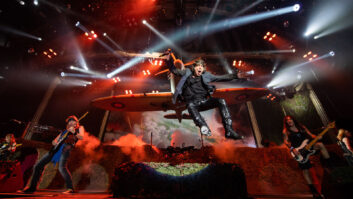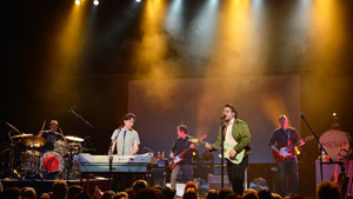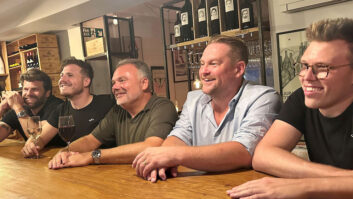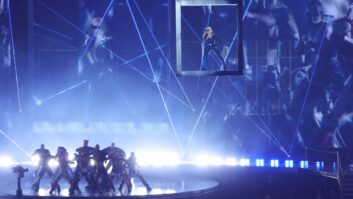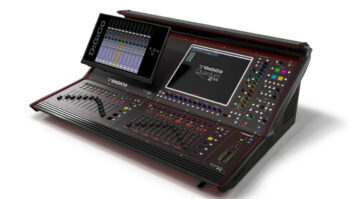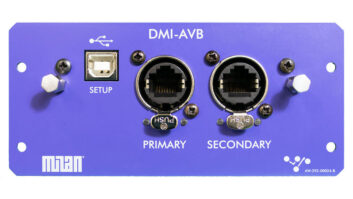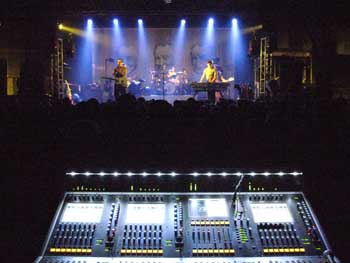
They Might Be Giants is currently on tour in the U.S. with a three-piece backing band. Mixing at the gigs is being done with a DiGiCo D5 and D1 package, supplied by New York–based audio company SK Systems.
The tour is playing a variety of venue sizes, from clubs to theaters, ranging in capacity from 500 to 3,000. Equipment is kept to a minimum with the DiGiCo consoles, a Lake Mesa system controller and four JBL VP7210/95DP powered speakers: two for use as side-fills and two as front-fill. “Other than that, we use whatever is provided at the venue. I cross my fingers every day for something really nice,” says front-of-house engineer Adam Robinson with a laugh.
Robinson started working with TMBG earlier this year, which introduced him to DiGiCo consoles for the first time. “The D5 is one of those ‘conceive it and it can be done’ digital desks,” he says. “Its flexibility is truly amazing, and it’s also quite easy to use. The intuitive layout has even made a fan of our support act’s engineer, who was previously not into digital desks at all.
“With virtually everything I need in front of me, I can access channels and aux sends quickly for audio cues. I also like how I can take my show files back and forth from D5s to D1s with ease, something that several other competitors can’t do.”
Robinson is currently running with up to 72 inputs: 12 for the support act, the rest (including effects returns) for the headliners. These include eight channels of D-Tube preamps. “They’re a feature that no one else offers,” notes Robinson, who is using the D5’s onboard effects for basic effects, with a TC Electronic Fireworx for specials.
He is also recording the show every night, the band then selling the recording of each gig via TMBG’s Website. “Our recording methods are pretty primitive compared to what’s possible with the desk,” he says with a laugh. “We use eight analog outs at FOH that feed a MOTU 828 digital audio/MIDI interface, which feeds a MacBook Pro running Digital Performer 5. The outputs are a mixture of two Neumann audience mics, plus the four mono and two stereo stems, which allow our lead guitarist to mix shows down quickly so we can get them put up on the Website as soon as possible.
“We’ve looked into other methods of recording, but a system that is a full multitrack would take us longer to prepare than is possible with our schedule. We’d still really like to find a mobile solution that would allow us to take these eight tracks via MADI, but it seems all the MADI solutions aren’t quite as portable as the one we’re using.
At the monitor position, Neil McDonald is mixing on a D1 Live and has all five bandmembers on IEMs, plus the JBL side-fills, providing eight separate mixes. This increases to 11 with the three-piece horn section that is added for some shows. Two of the horn players are using wedges and one on in-ears. McDonald also has a pair of wedges at downstage center for when the horn section moves position during certain parts of the show.
Although he has used the D1 Live in an FOH capacity before, this year was the first time he’d used one on monitors. “To be honest, everything is equally as valuable,” he says. “Some things, like the benefits of the small footprint, vary with the size of the venues, but the snapshots have been a life-saver. The band has several songs where the musicians switch instruments and there are obvious mix changes with that. Using snapshots has made the transition between those parts effortless.
For more information on the boards, visit www.digico.org. For additional SR news, visit The Briefing Room and mixonline.com/live/tourprofiles/.
